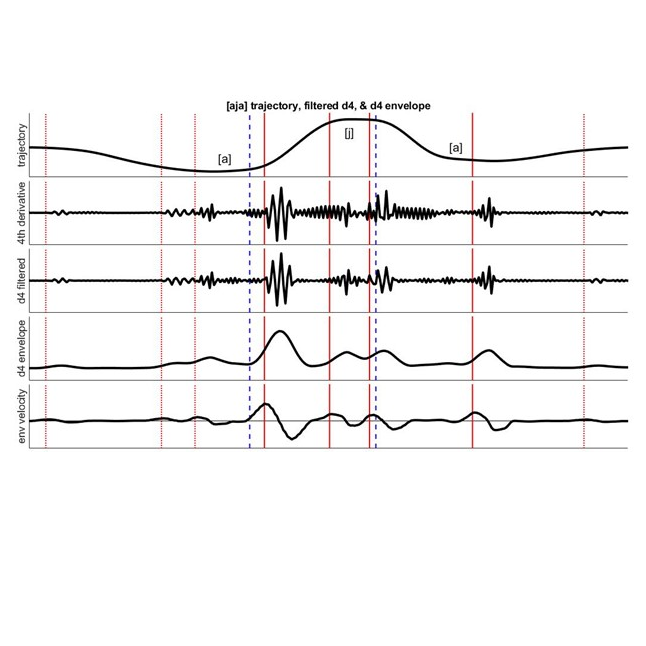Articulatory trajectories are useful for measuring speech properties, but come with complications: a given trajectory may be influenced by multiple articulators and/or multiple overlapping gestures.
Standard procedure is to identify landmarks from the trajectory and its velocity. Here, an alternative procedure is presented: higher order derivatives can be used to identify gesture onsets.
High-order derivatives are generally associated with signal noise and not considered to be meaningful, but more broadly, they reflect rapid changes in acceleration, which can derive from sources other than random noise.
It’s demonstrated that such high-order activity at gesture onsets is both predicted by the Task Dynamic Model of speech production (Saltzman & Munhall 1989) and observed in real electromagnetic articulography (EMA) data.
Articulator trajectories generated with the Task Dynamics Application (TADA) Matlab implementation of this model (Nam & Goldstein 2004) show a pattern of increasing activity around changes in gestural activation and decreasing activity elsewhere as successive derivatives are taken.
This was confirmed in EMA data on glides, demonstrating not only that the effect is real, but that it can be measurable above other noise. This activation noise can be isolated with targeted filtering, and may yield further insights into speech motor control.

